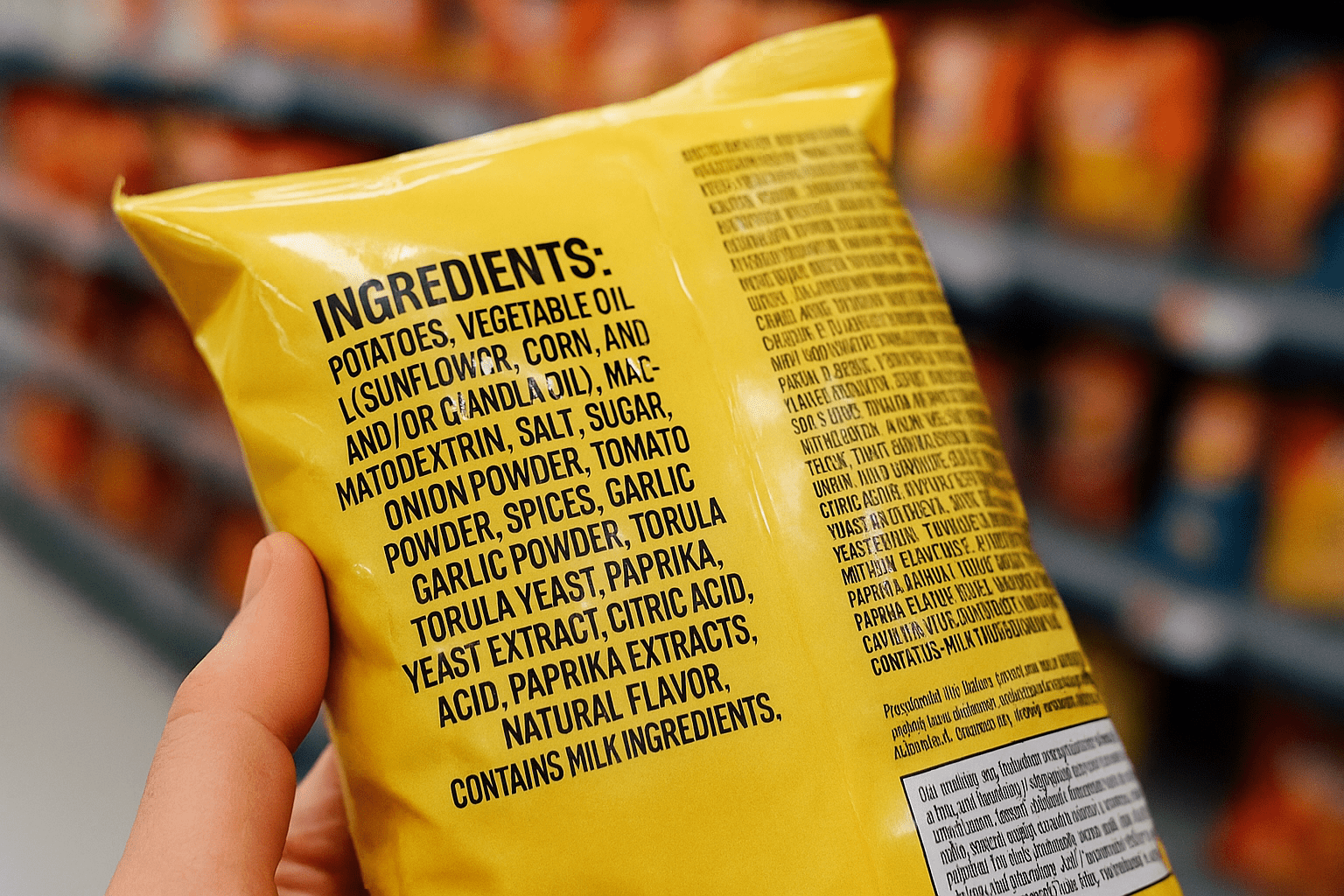Obesity is a growing global health crisis, and processed foods are a major contributor. But how do you know which packaged foods are unhealthy? The answer lies in reading labels carefully.
This guide will teach you what to look for on food labels and which ingredients or claims to avoid to make smarter, healthier choices.
1. The Biggest Red Flags on Food Labels
1. Added Sugars (Hidden Under Many Names)
Excess sugar is a leading cause of weight gain, insulin resistance, and belly fat. The World Health Organization (WHO) recommends less than 25g (6 tsp) of added sugar per day.
Watch out for these sugar aliases on labels:
- High-fructose corn syrup (HFCS)
- Sucrose, glucose, fructose
- Maltose, dextrose, barley malt
- “Natural” sugars like honey, agave, coconut sugar (still count as added sugar!)
What to do?
- Choose products with <5g added sugar per serving.
- Avoid “low-fat” foods (they often replace fat with sugar).
2. Refined Carbohydrates (White Flour, Processed Grains)
Refined carbs spike blood sugar, increase hunger, and promote fat storage.
Common sources:
- “Enriched wheat flour” (not whole grain)
- White rice, white bread, pasta
- Breakfast cereals (even “healthy” ones like cornflakes)
What to do?
- Look for “100% whole grain” or “whole wheat” as the first ingredient.
- Avoid foods where sugar + refined flour are the top ingredients.
3. Unhealthy Fats (Trans Fats & Too Much Omega-6)
Not all fats are bad, but processed fats contribute to obesity and inflammation.
Avoid:
- “Partially hydrogenated oils” (code for trans fats, which are banned in many countries but still sneak in).
- Highly processed vegetable oils (soybean, corn, sunflower oil—high in inflammatory omega-6).
What to do?
- Choose foods with healthy fats like olive oil, avocado oil, or nuts.
- Avoid fried snacks, margarine, and packaged baked goods.
4. Artificial Sweeteners (May Still Trigger Cravings)
While they have zero calories, some studies suggest artificial sweeteners disrupt gut bacteria and increase sugar cravings.
Common ones to watch for:
- Aspartame (Equal, NutraSweet)
- Sucralose (Splenda)
- Saccharin (Sweet’N Low)
What to do?
- If you need sweetness, opt for small amounts of natural sweeteners (stevia, monk fruit).
- Best choice? Reduce sweet tastes altogether to reset cravings.
5. High Sodium (Hidden in “Healthy” Foods)
Too much salt leads to water retention, high blood pressure, and may increase appetite.
Surprisingly high-sodium foods:
- Canned soups
- Packaged deli meats
- Frozen meals
- Sauces & condiments (soy sauce, ketchup)
What to do?
- Look for “low sodium” or “no salt added” versions.
- Season food with herbs and spices instead of salt.
6. Misleading Health Claims (Don’t Be Fooled!)
Food companies use clever marketing to make junk food seem healthy.
Deceptive claims to ignore:
- “All-natural” (meaningless—sugar and corn syrup are “natural”).
- “Fat-free” (often loaded with sugar).
- “Gluten-free” (doesn’t mean healthy—many GF snacks are high in sugar and starch).
- “Made with real fruit” (usually just fruit flavoring or tiny amounts).
What to do?
- Always check the nutrition facts and ingredients—not just the front label.
2. Quick Checklist: How to Pick a Healthy Packaged Food
✔ Short ingredient list (the fewer, the better).
✔ No added sugars (or very low—<5g per serving).
✔ Whole grains (not “enriched flour”).
✔ Healthy fats (olive oil, nuts, avocado—not hydrogenated oils).
✔ Low sodium (<140mg per serving is ideal).
3. Final Tip: Shop the Perimeter of the Grocery Store
The healthiest foods (fresh produce, meats, dairy) are usually on the outer aisles. The middle aisles are where most processed, obesity-promoting foods lurk.
By reading labels carefully and avoiding these traps, you’ll make better choices and reduce your risk of obesity.
Want a deeper dive? Ask me about:
- Best & worst snacks for weight loss
- How ultra-processed foods hijack your brain
- Meal prep tips to avoid packaged foods
Stay informed and eat smart!



